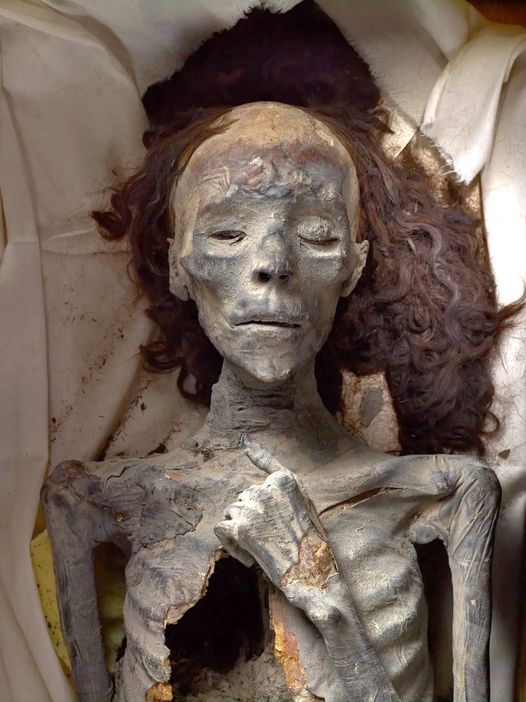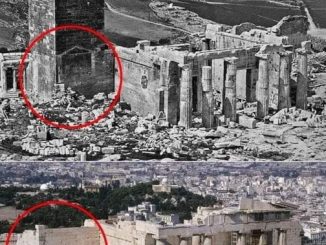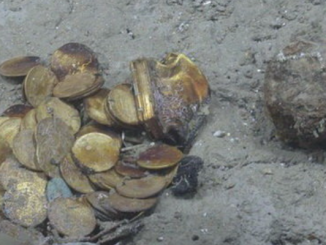The discovery of ancient mummies often reveals not only the identities of the individuals but also intricate details about their lives, cultures, and the times they lived in. One such remarkable find is the mummy of Queen Tiye, a prominent figure in Ancient Egypt’s 18th Dynasty. Unearthed in 1898 by Victor Loret within the second side chamber of the tomb of Amenhotep II, Queen Tiye’s mummy offers fascinating insights into royal life, religious practices, and ancient Egyptian funerary customs. This blog post delves into the discovery, identification, and significance of Queen Tiye’s mummy, shedding light on the life and legacy of this influential queen.

The Discovery and Historical Context
The tomb of Amenhotep II, located in the Valley of the Kings, served as a significant archaeological site, yielding numerous royal mummies from both the 18th and 19th Dynasties. When Victor Loret stumbled upon the tomb in 1898, it was clear that it had been repurposed by the Ancient Egyptian priesthood as a storage chamber for royal mummies to protect them from tomb robbers. Among these mummies was the body of Queen Tiye, the Great Royal Wife of Amenhotep III and the grandmother of the famous pharaoh Tutankhamun.
Queen Tiye’s identification was initially a challenge, as her mummy was simply referred to as “The Elder Lady.” However, a unique feature set her apart: her luscious and lengthy hair. This distinctive characteristic played a crucial role in confirming her identity. In King Tutankhamun’s tomb, a lock of hair was found within one of four miniature sarcophagi marked with the Queen’s name. The hair was preserved with such care that it provided a direct link to Queen Tiye. Electron probe analysis in the 1970s and subsequent DNA analysis in the 2010s, conducted by Dr. Zahar Saleem, conclusively matched the hair to Queen Tiye, confirming her identity beyond doubt.
The Mummification and Physical Features
Queen Tiye’s mummy provides an extraordinary glimpse into the mummification practices and physical attributes of an ancient Egyptian queen. Mummified in the traditional ways of her time, her body is remarkably well-preserved despite the ravages of time and postmortem injuries likely inflicted during tomb robberies. One of the most striking features is her left arm, raised in the royal pose across her chest, with her hand rigidly clasped as if holding a significant object—now missing, possibly stolen in antiquity. Her right arm lies alongside her body, slightly elevated over her lower torso, with her middle finger notably absent.
Examining Queen Tiye’s teeth reveals moderate wear, indicative of her age, estimated to be between 40 and 50 years at the time of her death. Her dental health is noteworthy, with her teeth in relatively good shape for her age. Fascinatingly, only one wisdom tooth remains, with evidence that the other three were removed during her lifetime. This detail provides a rare insight into the dental practices of ancient Egypt, demonstrating that the removal of wisdom teeth was a known procedure, shedding light on the advanced medical knowledge of the time.
The Significance of the Hair and DNA Analysis
The hair of Queen Tiye, both a distinguishing feature and a crucial element in her identification, offers a remarkable connection to her royal lineage. The lock of hair found in Tutankhamun’s tomb, now housed in the Egyptian Museum in Cairo (JE 60698), served as a physical link across generations. The initial electron probe analysis in the 1970s concluded a match between the hair from Tutankhamun’s tomb and that on Queen Tiye’s mummy. This was further corroborated by modern DNA analysis in the 2010s, which definitively confirmed the match.
The DNA analysis conducted by Dr. Zahar Saleem also established that the mummy known for decades as “The Elder Lady” was indeed Queen Tiye, the daughter of Yuya and Thuya. This confirmation not only resolved a long-standing mystery but also provided invaluable data on the royal lineage of the 18th Dynasty. The meticulous scientific methods used in this analysis underscore the importance of combining traditional archaeological techniques with modern technology to unravel the mysteries of the past.
Ancient Discoveries: Insights into Egyptian Life and Afterlife
The discovery and identification of Queen Tiye’s mummy have provided profound insights into ancient Egyptian life, beliefs, and afterlife practices. The meticulous mummification process, the preservation of hair, and the advanced dental procedures all highlight the sophistication of ancient Egyptian knowledge and their reverence for the dead.
Furthermore, the identification of Queen Tiye through DNA analysis emphasizes the importance of familial connections and the transmission of royal legacy. Queen Tiye was not only a powerful queen but also a matriarch whose influence extended beyond her lifetime. The lock of her hair found in Tutankhamun’s tomb signifies the deep respect and remembrance held by her descendants.
The physical state of the mummy, with her left arm in a royal pose and her right arm slightly raised, offers a glimpse into the symbolic gestures and rituals associated with royalty. The missing object from her clasped left hand invites speculation about the possible significance of the item she once held, perhaps a symbol of her power, authority, or religious devotion.
The discovery of postmortem injuries and the missing middle finger suggest that even in death, the bodies of the royals were not immune to the threats of tomb robbers. These injuries, however, do not diminish the grandeur and significance of Queen Tiye’s mummy; instead, they add layers to the story of her life, death, and the centuries that followed.
Conclusion
The mummy of Queen Tiye stands as a testament to the enduring legacy of one of ancient Egypt’s most influential queens. Her well-preserved body, distinguished by her luxurious hair and regal pose, provides a tangible link to the past, offering insights into the customs, beliefs, and advancements of her time. The meticulous scientific analysis that confirmed her identity underscores the importance of integrating modern technology with traditional archaeology to uncover the secrets of history.
Queen Tiye’s mummy is not just a relic of the past; it is a symbol of the continuity of human ingenuity, respect for the dead, and the quest for knowledge. As we continue to explore and study such discoveries, we gain a deeper understanding of the ancient world and its profound impact on our present and future. For those fascinated by history, the story of Queen Tiye’s mummy is a compelling reminder of the richness and complexity of ancient civilizations, inviting us to look closer and appreciate the intricate tapestry of human history.
To truly appreciate the magnificence of Queen Tiye’s mummy, we encourage you to view the images and artifacts related to her discovery. These visual representations provide a deeper connection to her story and the remarkable preservation of her legacy.


